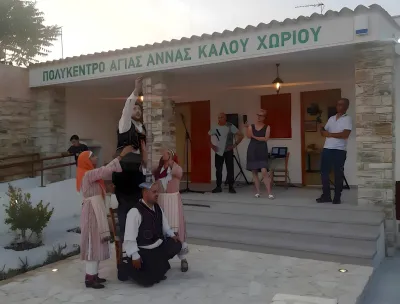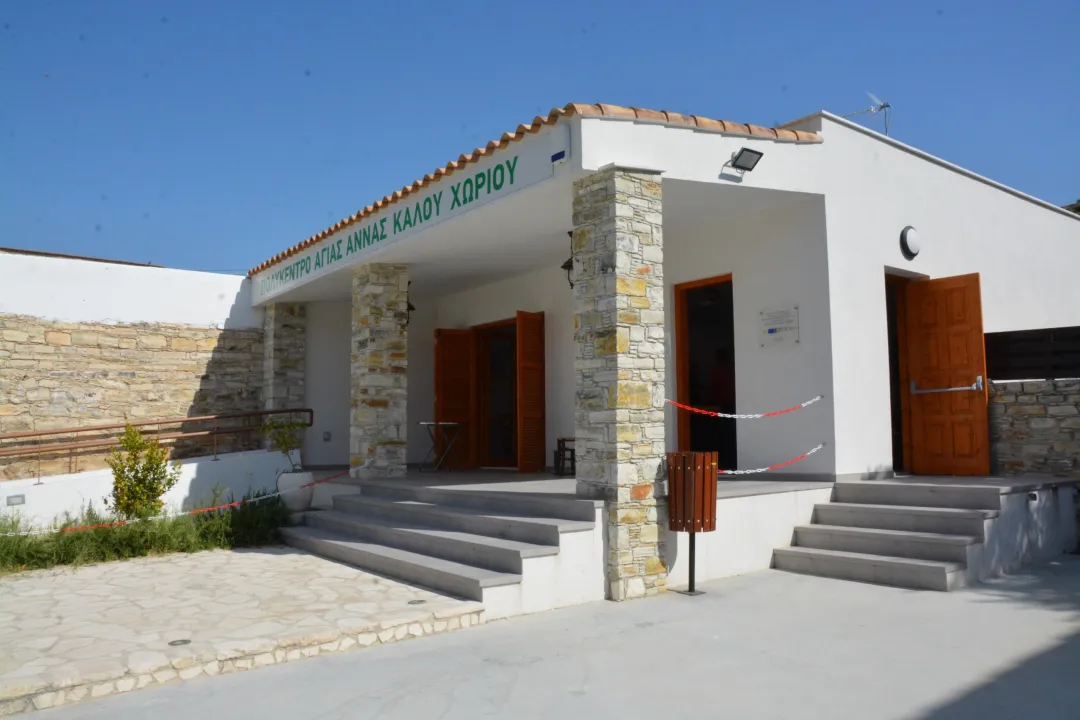General information
RDP Priority
- P6. Social inclusion and local development
RDP Focus Area
- 6B: Local development
RDP Measure
- M19: LEADER/CLLD
Beneficiary type
- Local association
Summary
Agia Anna is a small village with 400 residents, located 16 kilometres west of Larnaca, Cyprus. Due to the community’s limited financial resources, they lacked a facility for hosting cultural, tourist or social events, and this compounded the social exclusion and isolation of elderly and physically disabled residents. This group are least likely to be able to travel to events that are held in neighbouring communities and are, therefore, most in need of social activities within the village itself
Support from the LEADER measure provided by the Larnaca and Famagusta districts development agency aimed to help Agia Anna build its own community centre to maintain inclusivity and boost social participation among its residents.
Results
The community centre is used to host festivities, as well as medical, cultural and tourism events.
A new work position was created.

Promoter
Agia Anna – Kalo Chorio Community board
Funding
Total budget 139 639 (EUR)
EAFRD: 98 151 (EUR)
National/Regional: 24 538 (EUR)
Private/own: 16 950 (EUR)
Ressourcen
Documents
Good Practice Report - LEADER helps build a rural community centre in Cyprus to boost social and civic participation
(PDF – 3.01 MB)
Links
Context
Investing in community halls and other facilities in rural areas yields significant socioeconomic benefits that contribute to the overall development of these communities. Firstly, community halls serve as multifunctional spaces that facilitate social interaction and cohesion among residents. By providing a venue for gatherings, events and workshops, these facilities foster a sense of belonging and enhance community engagement. This increased social capital can lead to improved well-being and stronger social networks, which are essential for resilient rural communities.
Furthermore, establishing community facilities stimulates local economies by creating job opportunities during the construction and operation phases. These venues often require management, maintenance and programming staff, thereby generating employment for local residents. Additionally, hosting events such as markets or festivals can attract visitors from surrounding areas, boosting local businesses through increased patronage.
Agia Anna is a small village located 16 kilometres west of the city of Larnaca. It is inhabited by 400 residents and, due to its small size, has limited financial resources and limited capacity to implement development projects.
Agia Anna had no suitable facilities for hosting social gatherings and cultural events. The community was forced to rent premises in neighbouring communities to organise activities. This automatically excluded part of its population since many could not travel to neighbouring villages. Consequently, the increasing social exclusion and isolation of the elderly and people with physical disabilities was an inevitable outcome of not being able to arrange gatherings and events within Agia Anna itself.
Support from the LEADER measure provided by the Larnaca and Famagusta districts development agency would enable this small community to create its own premises for organising such events.
Objectives
The aim of this project was to establish a space in which the community could organise a variety of events locally and thus promote social inclusion and local development.
Activities
The community board had reclaimed an empty plot in the centre of the small village of Agia Anna to build a centre that could host social, cultural, religious and festive events as well as civic and public health programmes. The project activities included:
- Preparing and submitting the project application.
- Implementing the public procurement procedures, after the project application had been approved in accordance with Cypriot regulations.
- Upon the commencement of construction, frequent meetings were organised between all stakeholders to ensure that project implementation was on track: planning, schedules, timetables, etc.
- Organising dissemination activities, which included the permanent posting of informative signs at the construction site, the frequent posting of photo galleries on social media indicating the progress of the project and a gala event to celebrate the opening of the venue. Invitations, flyers and souvenirs were also prepared.
Main results
Thanks to this project, the local authority can now host a full programme of public events. This includes creative workshops, performances and exhibits, public health programmes (blood donation, audiology screening, etc.), award ceremonies and seasonal celebrations.
A new work position has been created to oversee the operational management of the space.
Key lessons
Investment in community infrastructure promotes access to essential services such as education and healthcare by acting as hubs for various programmes. By providing space for educational workshops or health clinics, community halls can address critical needs while enhancing the quality of life in rural settings. Overall, investing in such facilities is instrumental in fostering sustainable socioeconomic growth within rural communities.
The new venue brings this small community closer together; providing a safe and familiar place for all, regardless of their age, sex or educational background. Moreover, the events and activities hosted at the venue bring in visitors from neighbouring communities, opening up new opportunities for social connection.
“This project has fulfilled our need for socialisation and the inclusion of all groups.”
